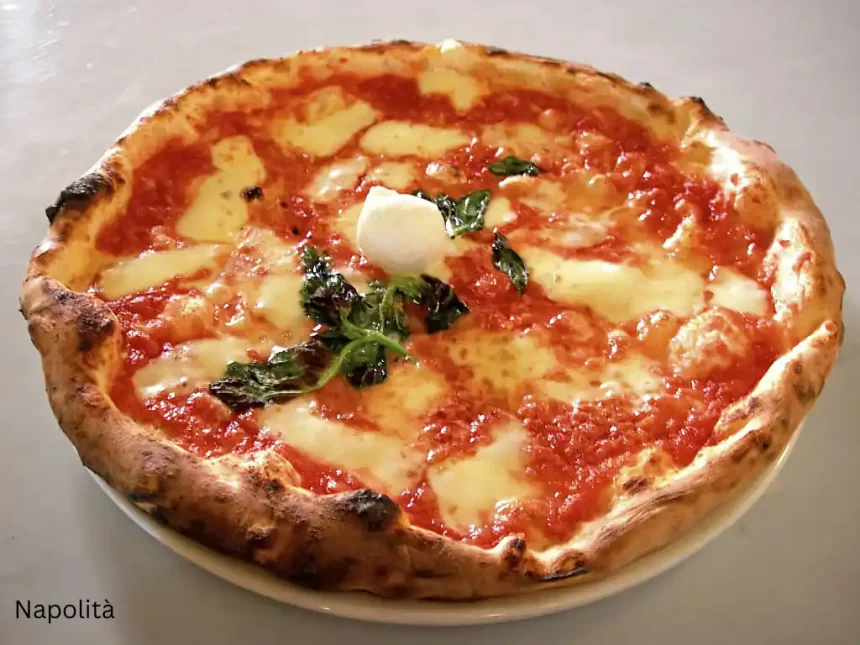Napolità or Neapolitan is not just a language; it’s a song. It mingles with the lively chords of a mandolin, the sizzle of freshly caught seafood, and the heartfelt serenades that echo through Naples’ cobbled streets. This vibrant language is rooted in the rich history, culture, and people of Southern Italy.
Its melodic cadence and expressive vocabulary make it a treasure of Italy’s linguistic tapestry.Embodying the essence of Southern Italy, it is the language of the people, the proud expression of cultural richness that has been woven into the region’s traditions and daily life.
A Brief History

Napolità evolved from Vulgar Latin, just like other Romance languages such as Italian, French, Spanish, and Portuguese. However, unlike its counterparts, it has remained largely untouched by the influence of standard Italian. It has retained its distinct character, reflecting the diverse heritage and influences of Southern Italy.
Cultural Significance
Napolità serves as a powerful symbol of pride for the people of Southern Italy. It is deeply intertwined with their identity, history, and customs. In addition to being spoken in Naples, it is also the primary language in other regions of Southern Italy, such as Campania, Calabria, and Apulia.
It is not only a language but also a way of life, embodying the warmth, passion, and hospitality that are hallmarks of Southern Italian culture.
Melodic Cadence
One cannot talk about Napolità without mentioning its melodic cadence. The language’s rhythms and intonations have been compared to music, with each word carrying a unique melody.
This musical quality is perhaps why Napolità has been called the language of love, as it lends itself effortlessly to romantic expressions and serenades.This musical quality is due to its origins as a spoken language, often used in songs and poetry.
Linguistic Characteristics
Napolità is known for its musicality and expressive nature. It has a unique pronunciation, with its own set of vowels and consonants that distinguish it from standard Italian.
Its vocabulary is rich and colourful, incorporating influences from various cultures, including Greek, Spanish, French, and Arabic.
Preserving the Language
Napolità faces the threat of extinction due to the dominance of standard Italian. To combat this, efforts are being made to preserve and promote the language.
This includes initiatives such as Napolità language classes in schools and universities, cultural events that celebrate Napolità, and ongoing research into its linguistic and cultural significance.
A Language of Expression

Napolità is more than just a means of communication; it’s a way to express emotions, thoughts, and experiences in an authentic and heartfelt manner.
Its expressive nature allows for the expression of deep feelings that may otherwise be difficult to articulate.
Discovering Napolità

For those interested in learning it, there are plenty of resources available. From language classes and online courses to books and music, there are many ways to immerse yourself in this unique and vibrant language.
It’s a journey that not only teaches you a new language but also introduces you to the rich culture and history of Southern Italy.
A Living Relic of Italy’s Past
Napolità harks back to the days when the Kingdom of Naples reigned over Southern Italy. With its roots firmly planted in the Italo-Romance group from the Roman Empire, the language evolved as the diverse local cultures mingled with successive waves of rulers.
Whether it be exchanges with the Greeks in the 8th century BC or the Spanish viceroyalty of the 16th century, each interaction left an indelible imprint on the Napolità vocabulary and grammatical structures.
The Lingua Franca of Creativity
The contributions of Napolità to the world of art and music are immeasurable. It is the poetic language of the legendary Italian songwriters, enveloping poignant lyrics that have crossed international borders and left audiences ensnared in its emotion. It is the language of tradition, with ancient folk tales told in the bygone dialects that still resonate today.
Napolità’s Unyielding Spirit
As with many regional languages, Napolità faced challenges from the centralized language policies of the Italian state. Despite this, it has remained the oral tradition of the people, a testament to their perseverance, pride, and love for their unique cultural heritage.
Organizations and movements have sprung up to preserve and promote the use of Napolità, ensuring its vibrancy for future generations.
The Cultural Mosaic
One cannot truly appreciate the splendors of Southern Italy without grasping the influence of Napolità. The language serves as a bridge between the region’s past and present, uniting the communities of Naples, Salerno, and beyond under the banner of shared experience.
Its presence in literature, and music underscores its importance in shaping the vibrant and diverse tapestry that is the authentic southern Italian cultural identity.
Conclusion
Napolità is a living testament to the resilience and pride of Southern Italy. It stands as a unique linguistic heritage, celebrated for the art it has inspired and the cultural pride it embodies.
As we look to preserve the diversity that makes our world so rich, Napolità serves as a poignant example of what it means to cherish and celebrate one’s roots. In Naples, the language isn’t just spoken—it’s sung—and its melody resonates far beyond the bounds of the region, drawing admirers to the ineffable charm of Southern Italy.
FAQ’s On napolità
-
What is it?
It is a Romance language spoken in Southern Italy, primarily in the regions of Naples, Campania, Calabria, and Apulia.
-
How is it related to standard Italian?
Napolità evolved from Vulgar Latin, just like standard Italian and other Romance languages. However, it has its own distinct vocabulary and grammar, shaped by the influences of various cultures.
3. Is Napolità a dying language?
It faces the threat of extinction due to the dominance of standard Italian. However, efforts are being made to preserve and promote the language through education, cultural events, and research.
4. Can I learn it as a foreigner?
Yes, there are resources available for learning it, including language classes, online courses, books, and music. It’s a journey that not only teaches you a new language but also introduces you to the rich culture and history of Southern Italy.
5. What is the cultural significance of it?
It serves as a bridge between the present and past of Southern Italy, uniting communities and preserving traditions through its use in literature and music. It is also a symbol of the resilience and pride of the region’s diverse cultures.













Leave a Reply